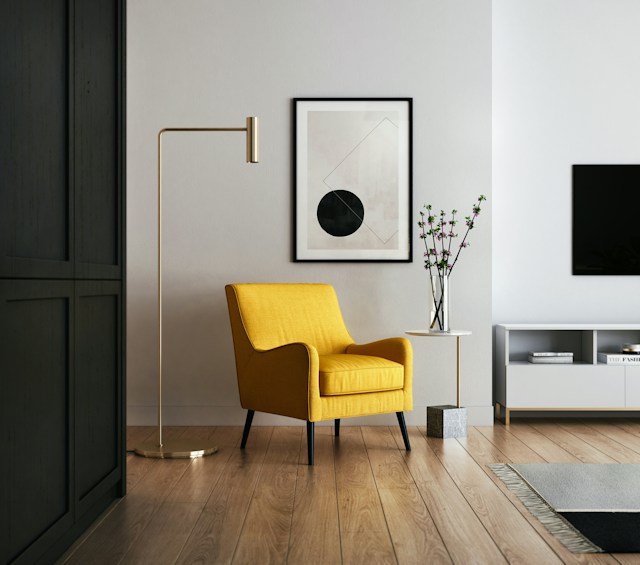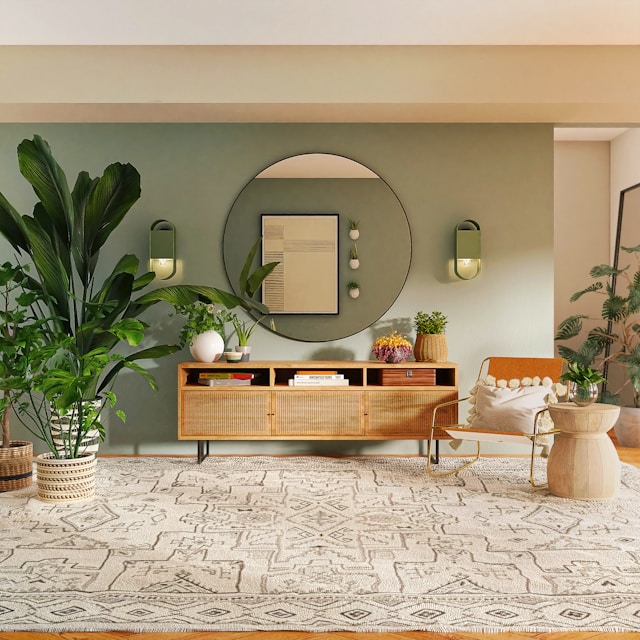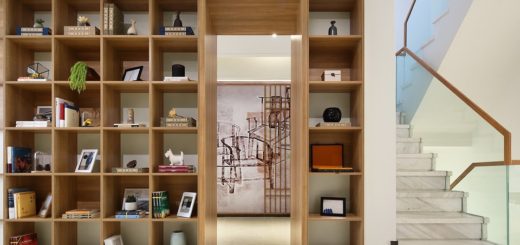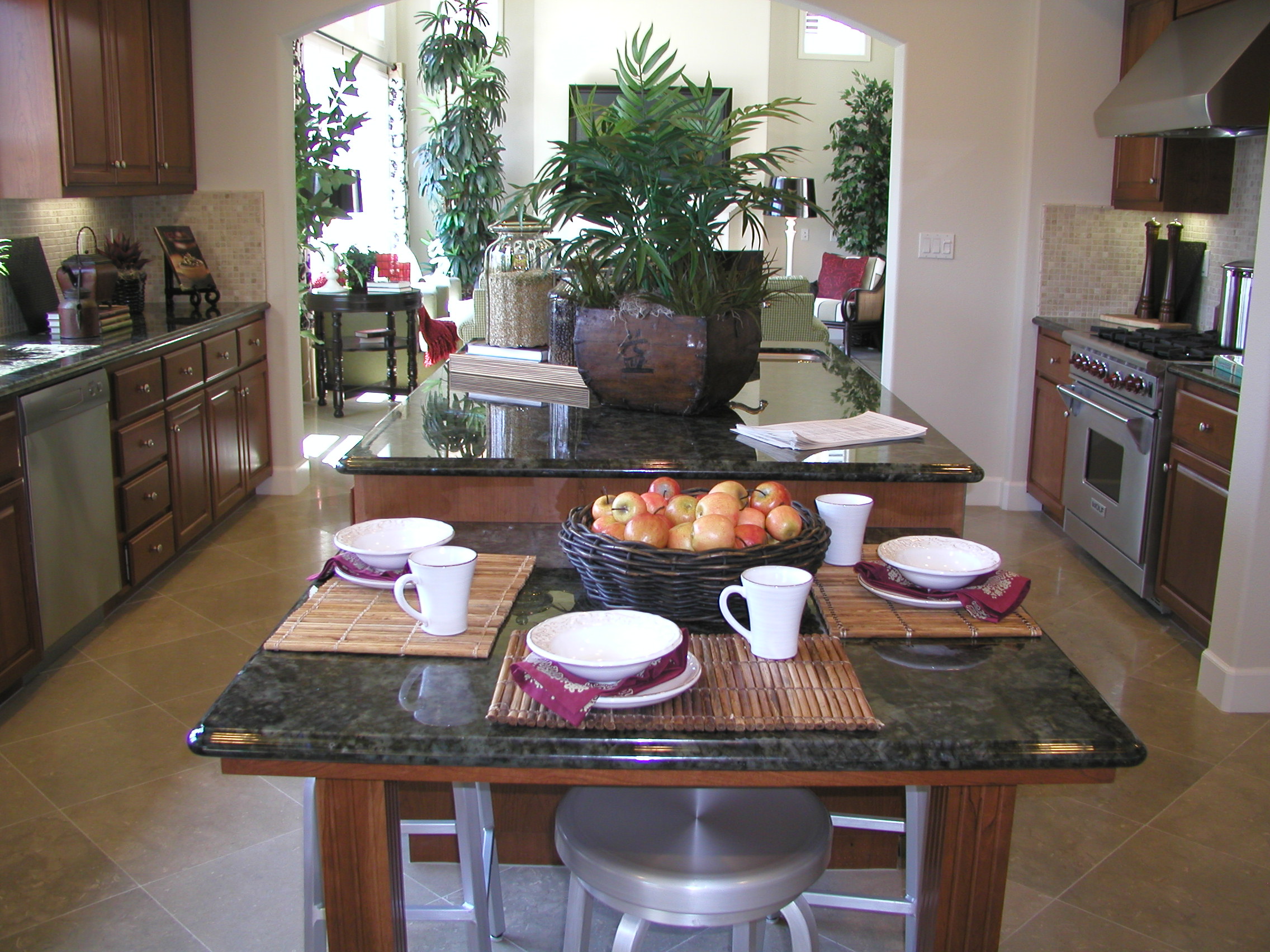Sensory elements of interior design for people with dementia
Designing an interior space for someone living with dementia requires careful consideration of their cognitive abilities, sensory perception, and safety needs. The goal is to create a supportive and familiar environment that enhances their well-being. Here are three sensory elements to consider.
Colour and Contrast
Colour and contrast play a crucial role in interior design for people with Alzheimer’s disease or other forms of dementia. These design elements are essential for creating a supportive and functional environment that addresses the specific challenges associated with dementia. They help to create a calm, familiar environment, and avoid people feeling confusion in their own home.
Improved Visibility and Navigation Reduces Agitation and Confusion
High contrast between walls, furniture, and floors helps people with Alzheimer’s and dementia to distinguish different elements within a space. Clear colour distinctions make it easier for them to identify pathways and navigate through the environment. Well-chosen colours can create a calming and soothing atmosphere, reducing agitation and anxiety often experienced by people living with dementia or Alzheimer’s. Avoiding overly vibrant or contrasting colours can prevent visual confusion and sensory overload.
Enhanced Depth Perception Provides Visual Prompts and Orientation
Adequate contrast between surfaces aids depth perception, making it easier for people to perceive changes in floor levels, doorways, and other environmental features. This is particularly important to prevent falls and enhance overall safety. Individual colours can also be used as visual cues to denote different areas or rooms, helping people maintain a sense of orientation. Clearly contrasting elements make it easier to locate and identify objects, promoting a sense of independence in daily activities. Having items with distinct colours, especially clothing or personal belongings, make them easier to recognise and will provide an element of independence.

Thoughtful Use of Colours Can Evoke Positive Memories
Incorporating colours associated with nature or a person’s past can be beneficial. Using familiar colours related to personal history can help trigger positive emotions and memories. Strategic use of colour can also create focal points in a room, drawing attention to specific areas or objects. This can help people focus on important information or activities, reducing distractions.
In order to support people with dementia in their own home, it’s essential to balance the use of colour and contrast, but, of course, it’s also important to consider personal colour preferences that can contribute to a sense of comfort and well-being.
Lighting
Lighting is a critical aspect of interior design for people with Alzheimer’s disease or other forms of dementia. Properly designed lighting can positively impact their well-being, safety, and overall quality of life. Here are some key considerations for incorporating lighting in dementia-friendly interior design.
Light Levels Regulate Circadian Rhythm and Reduce Agitation
Adequate and uniform lighting helps improve visibility, making it easier for people to see and recognise their surroundings. Minimising shadows and dark corners can prevent confusion and falls. By providing plenty of exposure to natural light during the day this will
support the regulation of the circadian rhythm. In this way, exposure to natural light helps maintain a healthy sleep-wake cycle, which is often disrupted in people with dementia.
Soft, diffused lighting helps create a calm and soothing atmosphere, reducing anxiety and agitation so avoid harsh or flickering lights, as these can be disorienting and distressing.
Lighting From a Safety Aspect
Areas of the home, such as hallways, stairs, and bathrooms, need to be well-lit to prevent accidents. It’s also a good idea to install night lights to assist with finding the way during the night without causing distress.
By providing ample lighting to enhance contrast between objects, surfaces and pathways, this can help with depth perception and enable better navigate of the home environment and so reducing the risk of tripping or falling. However, it’s also important to avoid glare as it can be disorienting and uncomfortable for people with cognitive impairments. It’s relatively easy to minimise glare by using lamp shades, curtains, or diffusers on windows. Dimmable light bulbs are useful as they allow for customisation based on the time of day and specific needs.
Lighting to Create a Homely Atmosphere
Warm, inviting lighting can contribute to a homely and comfortable atmosphere which encourages social interaction for many people. However, it’s essential to consider the specific preferences and sensitivities of people with dementia when designing lighting solutions. Not all forms of dementia are the same so regular assessments of lighting needs is always a good idea, along with input from carers and healthcare professionals.

Sensory Stimulation
Sensory-rich elements, like textured fabrics and soft or tactile furnishings along with soothing sounds or music will create a calming atmosphere. For that reason, sensory stimulation is crucial in interior design for people with dementia because it can positively impact their overall well-being, cognitive function, and quality of life. Dementia often involves cognitive decline and changes in sensory perception, and a thoughtfully designed environment can help mitigate these challenges. Here are some reasons why sensory stimulation is important in dementia-friendly interior design.
Cognitive Engagement Results in Emotional Well-Being and Social Interaction
Sensory stimulation engages the mind and encourages cognitive activity. Purposeful and meaningful stimuli can enhance attention, memory, and problem-solving skills in people living with dementia. Sensory experiences can evoke positive emotions, reduce anxiety, and enhance mood. Pleasant sensory stimuli also contribute to a sense of comfort, security, and happiness.
Spaces that facilitate communication and shared activities can help people with conditions such as Alzheimer’s to maintain social connections, reducing feelings of isolation. A well-designed environment will help encourage these vital social interactions.
Easy Navigation and Orientation Promotes Independence
Sensory cues can aid orientation by the use of distinct textures, colours and sounds in different areas of the living space. These can serve as helpful cues to navigate the surroundings. This supports independence in daily activities with well-defined textures and contrasts helping people identify objects and help with the completion of routine tasks. Incorporating tactile elements, such as textured fabrics, soft furnishings, or items with varied surfaces, provides tactile stimulation. This can enhance the sense of touch, contributing to a more engaging and comfortable environment.
Therapeutic Benefits of Sensory Stimulation
Sensory stimulation is known to have therapeutic benefits, contributing to the overall well-being of people with Alzheimer’s or other types of dementia. It can enhance mood, reduce challenging behaviour, and improve overall quality of life. A sensory-friendly environment considers the physical, emotional, and cognitive needs of people, contributing to a more supportive and enriching living environment.
When thoughtfully chosen visual elements, such as artwork, photographs, or nature views, provide visual stimulation this can trigger positive memories. The same can also be true of soft, soothing sounds or familiar music which promotes relaxation and reduces stress. By providing a variety of sensory experiences people can choose stimuli that resonate with their preferences.
Quite simply, by creating environments that offer appropriate and positive sensory experiences, family carers can enhance the daily lives of loved ones living with dementia





Recent Comments